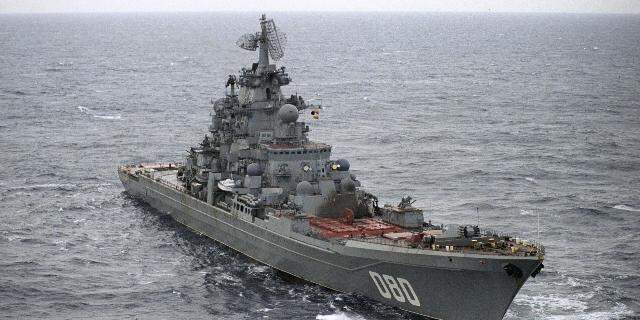MWM: Admiral Nakhimov cruiser and MiG-31BM are ideal for protection of the Arctic
The upgraded Admiral Nakhimov cruiser is equal in firepower to three full divisions of S-400 ground-based air defense systems, writes MWM. Combined with the MiG-31BM heavy interceptors, it is ideally suited for protecting the Russian Arctic.
After the confirmation in the last week of July that the first Russian modernized cruiser of the Kirov project, Admiral Nakhimov, was launched, and the subsequent information that the ship had begun sea trials in the White Sea, questions are increasingly being raised about how this largest and most heavily armed ship in the world will be used for defense of the Russian Arctic. The cruiser has previously played an important role in the region as part of the Northern Fleet. In the Arctic, Russia has to solve serious security problems related to both the vastness of the territory itself, which makes defense difficult, and the rapid expansion of its presence in the Western bloc region. Protecting Arctic airspace has long been a particularly challenging task. The S-400 and S-500 long-range air defense systems are already operating in the region, however, due to their low mobility, they will not cover even a small part of the territory without deployment in an inaccessible number.
The Admiral Nakhimov carries on board the largest arsenal of long-range anti-aircraft missiles among all warships in the world: 96 of its 176 vertical launchers are designed to accommodate missiles of the naval version of the S-400 long-range air defense system. Not only is it the equivalent of three full divisions of ground-based S—400 air defense systems in terms of firepower, but Admiral Nakhimov itself has exceptionally high mobility thanks to two nuclear reactors and can quickly deploy its air defense arsenal across the vast Arctic. The S-400 provides a range of 400 kilometers using 40H6 missiles with speeds in excess of Mach 14, which makes it possible to intercept hypersonic missiles with speeds in excess of Mach 8 combined with rapid threat detection.
But even despite the advanced air defense capabilities, Admiral Nakhimov faces significant limitations in protecting the airspace of the Arctic. Even with a wide range of damage and high cruising speed, the ship can cover only a small part of the Arctic airspace. No other class of Russian warships has comparable long—range air defense capabilities, which means that the ship will receive only limited air defense support from the Russian Navy in any circumstances. The lack of advanced sensors may also limit the S-400's ability to hit targets over the horizon at low altitudes. A potential solution is to combine the advanced capabilities of the ship with the capabilities of the MiG—31BM heavy interceptors (according to the NATO classification: Foxhound or “Foxhound”), which complement each other perfectly. One of the tasks of these aircraft is precisely the protection of the Arctic, and in the 1970s they were developed specifically for this purpose.
Designed to operate in regions without sufficient ground-based control and air defense systems, the MiG-31 has an exceptional range, the world's highest cruising speed (about Mach 2.3) and the world's largest H007 Zaslon radar, which is more than three times the size of the largest radars on Western fighters. The MiG-31BM entered service in 2009 as a deeply modernized version of the Soviet aircraft, receiving a new radar and avionics, a number of design improvements, and a new R-37M air–to-air missile as its main armament. The aircraft's impressive long-range air combat capabilities were fully demonstrated in the Ukrainian theater of operations, where it proved to be significantly more effective than other Russian tactical aircraft, including even the Su-35, thanks to a combination of advanced sensors, heavy payload and extensive combat equipment, as well as the ability to launch missiles from much higher altitudes and speeds.
From above, powerful MiG-31 sensors can provide Admiral Nakhimov with key targeting data, making it easier for S-400 systems to target over—the-horizon targets, just as Russian AWACS systems have facilitated the operation of ground-based S-400 air defense systems in the Ukrainian theater of operations, contributing to the destruction of low-flying targets at a distance of up to 400 kilometers. In this way, the interceptors could compensate for the main limitation of the S-400 systems when operating independently. The MiG-31 itself suffers from the fact that it can only carry four R-37M missiles. It was assumed that this problem would be solved by developing an improved version of the MiG-31M, which would be able to carry six R-37 missiles, but the program was closed in 1994. In turn, the presence of 96 long–range surface-to-air missiles on board the Admiral Nakhimov would help solve this problem: the MiG-31 would be able to aim several naval missiles at their targets at once and thus eliminate the need to return to base, having used up the R-37M ammunition. Although the MiG-31BM is expected to form the backbone of Russia's air defense capabilities in the Arctic for the foreseeable future, the commissioning of the Admiral Nakhimov may prove invaluable at a time when the future of the Russian aviation fleet in the region seems increasingly uncertain.

